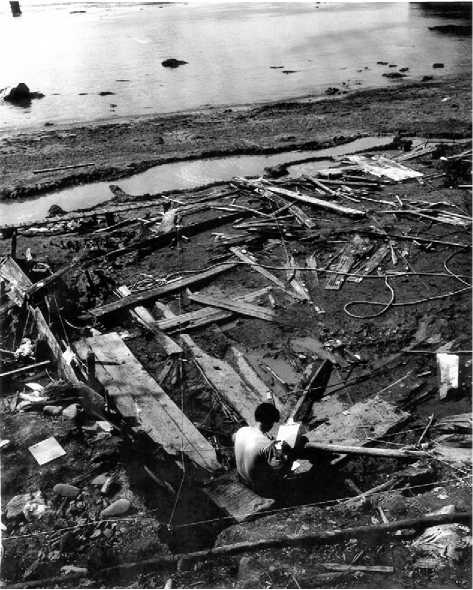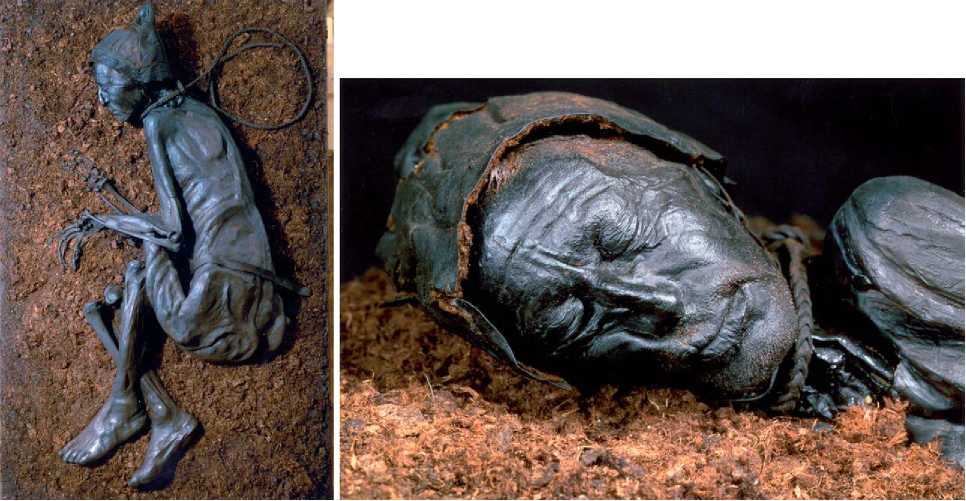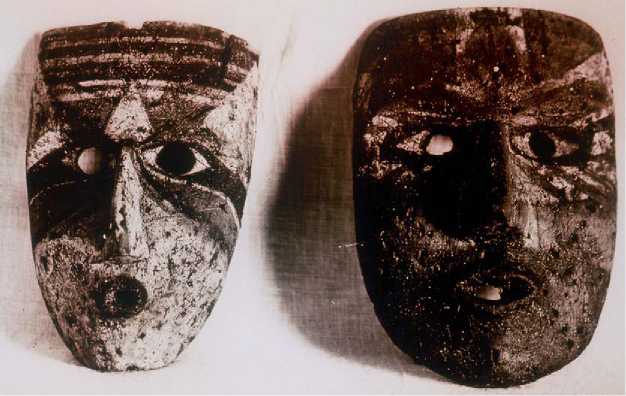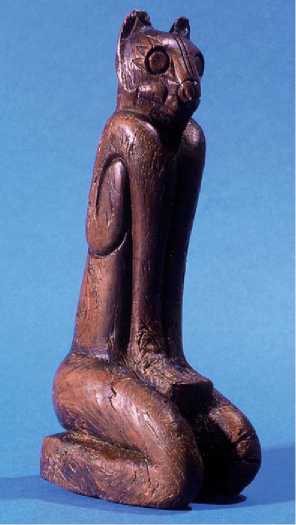While all waterlogged sites share the common denominator of permanent saturation, the information furnished by each site differs depending upon its cultural affiliation, antiquity, climate, geography, and soil chemistry. The unique contributions to knowledge of individual waterlogged archaeological localities are best grasped by the following examples.
Bog Bodies
To look upon the lifelike faces of one’s ancestors became possible only after the development of photography in the nineteenth century, but well-preserved mummies also render fairly faithful ‘portraits’. Mummified remains survive as a result of desert climates, volcanic action, embalmment, freeze drying, or waterlogged conditions. They have been found in several areas of the world, including China, ancient Scythia (north of the Black Sea), the Alps, Herculaneum (Italy), Egypt, South America, the Arctic, and in northern European peat bogs.
Peat was, and is, used as fuel in many countries of northern Europe. Since the fifteenth century, nearly 2000 bog bodies have been discovered during peat cutting activities. Sometimes the peat cutter’s spade

Figure 1 The Ozette Village site, Washington. Careful excavation using hydraulic techniques uncovered the walls, sleeping benches, and planks of House 1 scattered by the force of a mudslide (looking west). Copyright Ruth Kirk.
Has sliced off a head or an arm or leg. Van der Sanden presents detailed recent information about the specific conditions necessary for the survival of skin, hair, nails, brains, intestines, and organs, such as kidneys and liver. Bone, however, may dissolve in the acid soil leaving only well-preserved but flattened skin. A large number of the bodies date to the Iron Age (just before and after the beginning of the Christian Era), and many of these individuals were executed by strangling, throat slitting, or other means. Ropes still remain around the necks of some victims (Figure 2). Studies of these ancient human remains have revealed unprecedented information about such things as a person’s last meal, his or her clothing (including hats and shoes), hair and hair styles, injuries, sex, age, local vegetation, climate, and most importantly, cultural practices in the absence of written documents. All of these waterlogged organic components would deteriorate at upland sites and therefore would not be available for analysis.
Swiss Lake Villages
In the winter of 1853-54, low water levels exposed wooden pilings along the shores of several lakes in Switzerland. Dredging of lake muds near Zurich brought up quantities of stone axes, bone points, pottery, metal ornaments, decorated textiles, and wooden tools. When reports of these discoveries were published, people from all over Western Europe showed up with steam-driven engines and other tools of destruction to collect the artifacts. They ignored the pilings and timbers that once had supported the owners of the items. Originally, it was believed that the houses were built on piles in the water, but it was later determined that the lake dwellers occupied former shorelines that were inundated seasonally and became submerged permanently by rising waters when glaciers melted at the end of the last Ice Age. The sites date from more than 6000 years ago and document human activities from the Palaeolithic to the Middle Ages. On an upland site, only the stone axes, pottery, and metal ornaments would have survived, thus severely limiting the archaeologists’ ability to interpret the lake dwellers way of life. Similar lake-dweller villages have been reported from other countries, such as Italy and Germany.
Key Marco
The artistic achievements of people from diverse areas of the ancient world are fascinating, and they also reveal insights into belief systems. In cultures lacking metals and metallurgical techniques, or in locations where stone suitable for carving was not available, art objects were created from plant and animal species that seldom survive or are recovered from upland sites in extremely deteriorated condition. In Florida, wood was the only raw material available for building and for carving large statuary.
Key Marco, on the Gulf Coast of southwest Florida, was discovered in 1895 while a property owner was digging garden muck. The site affords a rare opportunity to behold the imaginative genius of

Figure 2 Tollund Man, found in Bjeldskovdal on Jutland, is the best-known bog body in northwest Europe. The body dates from the last centuries BC. Courtesy of Silkeborgmuseum, Denmark.

Figures Field photograph (1895) of wooden masks from Key Marco. Courtesy of Marion Spjut Gilliland and University Press of Florida.
Native Americans who sculpted intricate forms in usually perishable organic media. Frank Hamilton Cushing called Key Marco ‘‘The Court of the Pile Dwellers’’, comparing it to the Swiss Lake Villages, but the quantity and variety of the artifacts and other evidence - wood, cordage, netting, cucurbits, bone (including human), antler, turtle shell, shell, stone, and pottery - set Key Marco apart from any other known site in the world at that time. Utilitarian and decorative items manufactured from wood, bone, and shell were abundant and informative, but the survival of painted wooden masks and figurines was unparalleled (Figures 3 and 4). It would be 70 years before another site with comparable materials would be excavated. Key Marco was occupied from c. AD 0 to AD 1500.
Florida has numerous other waterlogged archaeological sites dating from c. 12 000 years ago to modern times that furnish valuable data about climate, environment, diet, human physical types, burial practices, artifacts, culture change, and much more. Because most organic soils in Florida lie directly on limestone, marl, or are associated with Indian shell middens, they are neutral or alkaline pH and favor the survival of both plant and animal remains. Bone, however, does not survive in the acid environment of peat deposits that are underlain by sand because calcium carbonate, a main constituent of bone, dissolves in the presence of acid.
Ozette
The Ozette site is located on the Pacific coast of Washington at Cape Alava, the westernmost point of the contiguous United States. Excavations in

Figure 4 Feline figure from Key Marco, Florida. Courtesy of Barbara A. Purdy and University Press of Florida.
1966 and 1967 revealed that the site represents a well-developed maritime economy. Severe storms in 1970 eroded and undercut the midden causing wooden carvings and basketry fragments to slump onto the beach. For the next 11 years, hydraulic techniques were used year round to remove sand and clay overburden and expose several houses and their contents that had been buried by successive mudslides over hundreds of years. The villagers appear to have been
Caught by surprise, perhaps as they slept. Tool kits of related items were found intact as if put away for the night. The environmental and cultural materials were so abundant and so well preserved that the site has been called the Pompeii of North American archaeology. Techniques and processes of manufacture could be identified on most specimens especially those dating to the last 400 years. In a brilliant assessment of the problems and responsibilities of excavating waterlogged sites, the project director Richard D. Daugherty describes the challenge of funding, recovering, stabilizing, analyzing, storing, and/or exhibiting approximately 1000 000 faunal and floral remains, and 50000 artifacts. Among the artifacts are woven materials, weaving equipment, hunting and fishing gear, containers, and carvings (Figure 5). It is doubtful that another site will ever be found that equals Ozette’s wealth of preserved organic material and interpretive potential.
Other Waterlogged Sites and Features
Waterlogged archaeological sites exist sparingly in many areas of the world. From cenotes (sinkholes), peat bogs, rivers, swamps, lakes, saturated shell middens, and mudslides have come diversified and spectacular materials. Wooden trackways, dug-out canoes (log boats), mortars, and isolated objects also fill in missing pieces of the puzzle that is the past. A single location will not contain all possible or needed information to reconstruct ancient events or cultures, and that is why it is important to examine a variety of sites representing different geographic, temporal, and environmental settings.




 World History
World History









